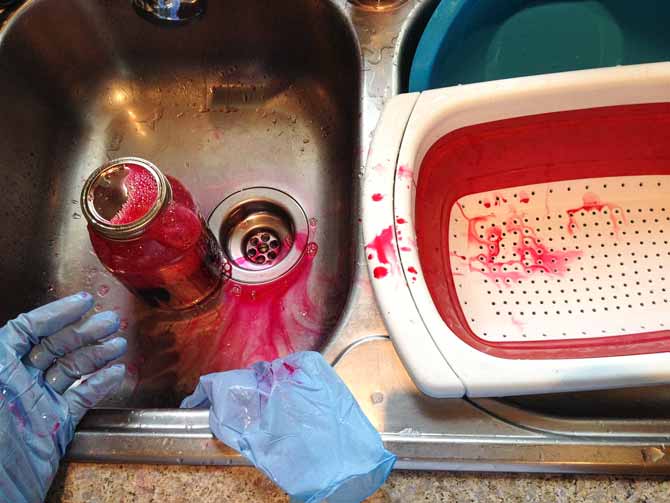Since I’m an indie dyer, I like to think I have some inside information on dye lots. There are a couple of trains of thought in regards to dye lots and matching up yarn. You can use the dye lot number to match up different skeins of the same color for commercially dyed yarns – this is an excellent idea, since they’re very close in color. However, with hand dyed yarn, you have to be much more careful. Just because the dye lot is the same, doesn’t mean the color is going to be exactly the same.

I definitely had a dye lot accident
I always suggest you use the time-tested method of switching skeins every other row when you’re working with hand dyed skeins. Not only does this break up any unwanted color pooling, but if the skeins are visually different, you’ll still get a fairly even color. Hand dyed yarn is not perfect and that is part of the charm, every skein will be slightly different. Even when I knit socks from my own yarn, the patterning on each sock was totally different and it was from the same ball.

Some color variations within the same skeins of yarn; tonal colors.
I kettle dye all my yarn, so the dye lots depend on several factors. One is the rate at which the yarn absorbs the dye. There are about a zillion factors included in this. If the yarn is closer to the bottom of the pot it gets darker, if you leave it in the pot longer it’s darker. There are a lot of factors you can’t really control, but you can replicate them very closely. This might mean you get a couple skeins that are exactly the same colour or you get one that’s much darker than the other. I have had two skeins from the same dye lot and they look very different. One happened to be near the bottom of the pot while dyeing and the other was nearer to the top. A majority of the dye absorbed into the bottom one because it was closer to the heat source and therefore set the dye much faster than the skein at the top of the pot.

Vampire barbie socks made from high twist.
Another really good photographic example are the Vampire Barbie socks I completed. They are from the same skein of yarn but look so very different. It could have been that my venison was a little tighter on one, or it could have been the dye, but the shafts of the socks were completely different!

Bottom of the pot and top of the pot.
Usually the hand dyed yarns are not a perfect solid color, unlike commercially dyed yarns, they are more tonal which lends a bit of depth and character to a knitted garment. As a summary I would simply say, use your common sense and look at the yarn with an eye towards the color. If they don’t look the same, see if there’s another skein that matches closer in color.
